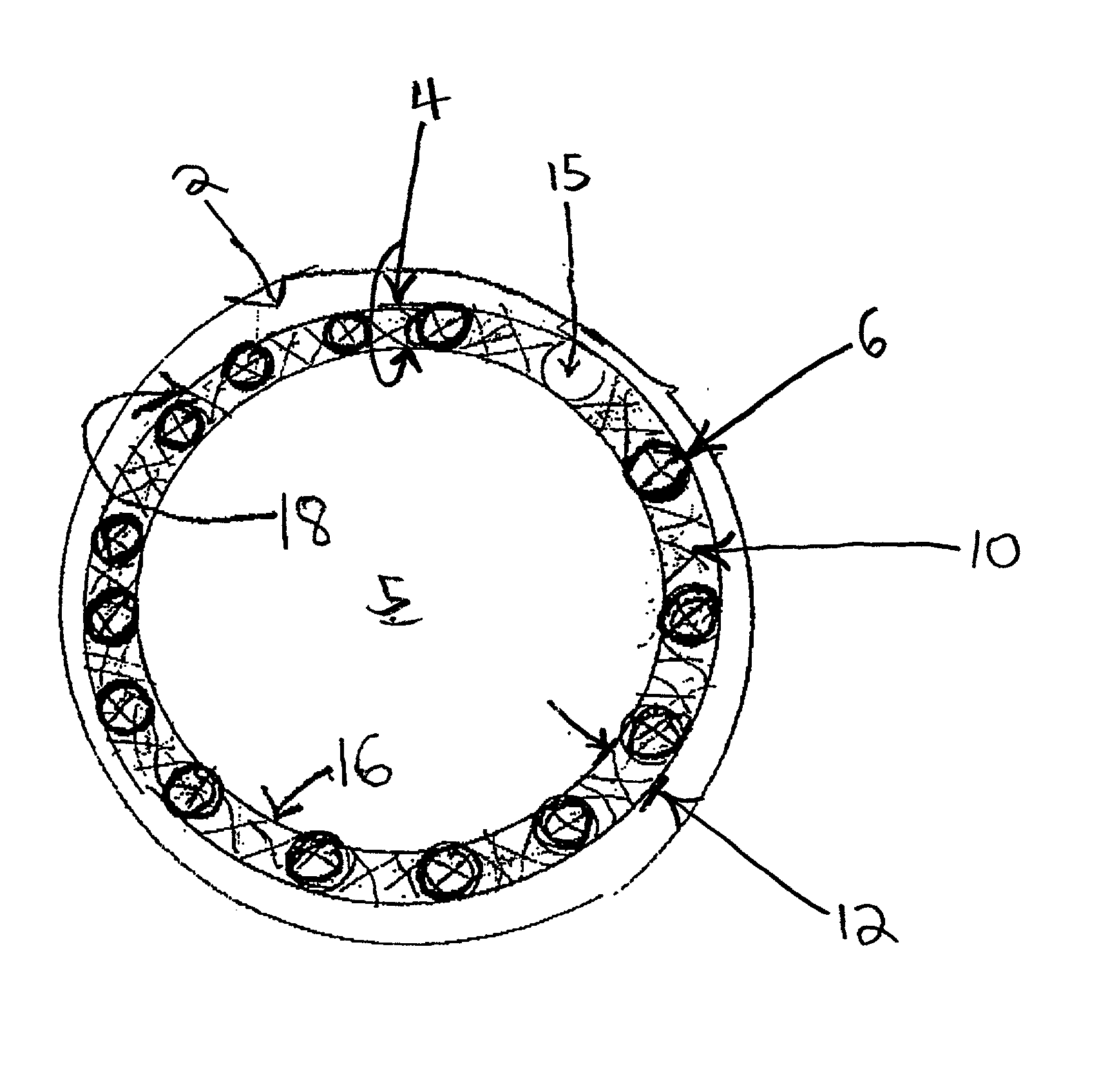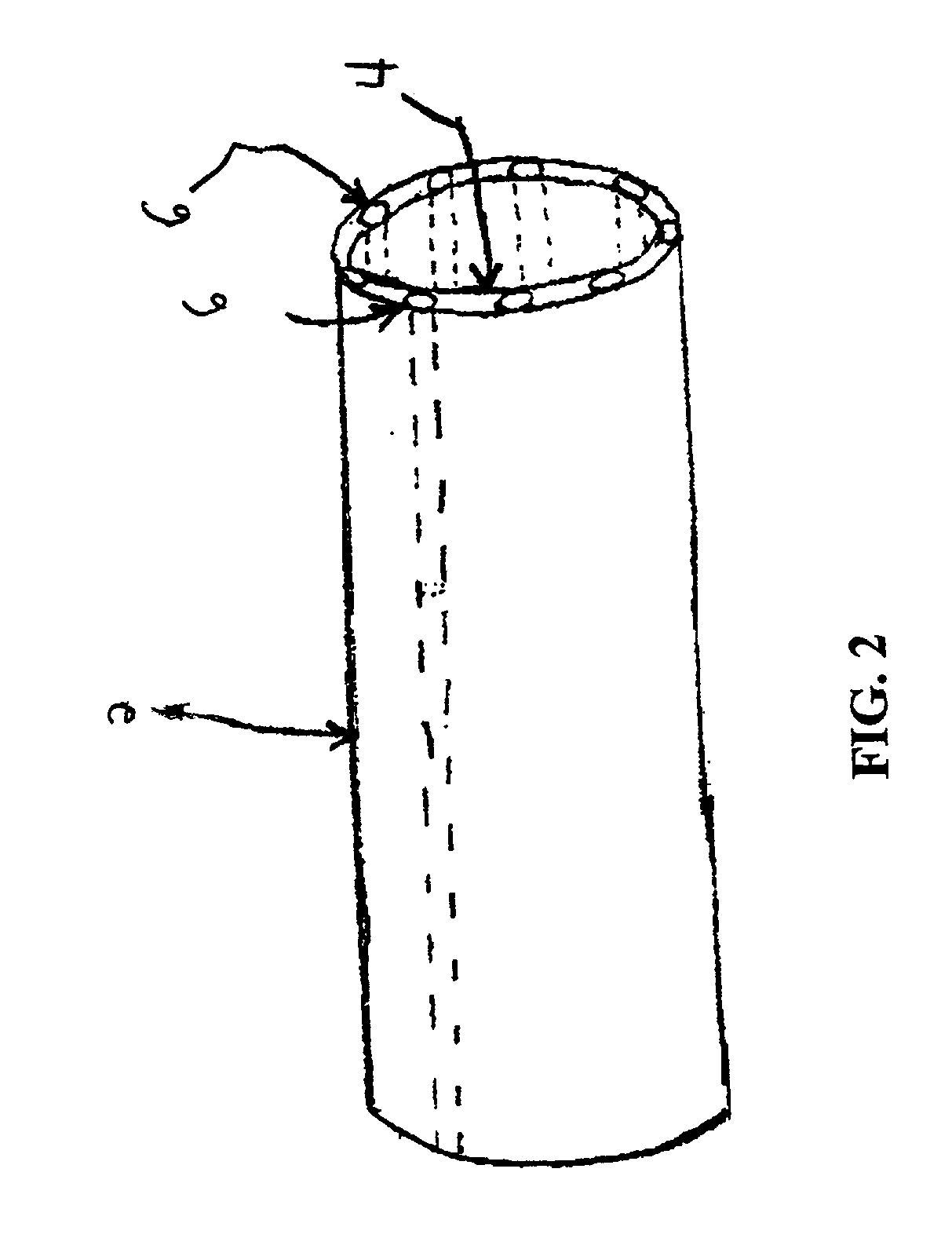Method and apparatus for lining a conduit
- Summary
- Abstract
- Description
- Claims
- Application Information
AI Technical Summary
Benefits of technology
Problems solved by technology
Method used
Image
Examples
Embodiment Construction
[0082] FIG. 1 depicts an embodiment of a lined conduit constructed in accordance with the present disclosure. The host pipe or host conduit 2 contains a liner material 4 fixed (directly or indirectly) to the inner surface of the host conduit 2. Host conduit 2 can be any pipe or vessel (e.g., an underground sewer pipe) that is adapted to transport or contain a fluid (e.g., liquid, gas, mixture of liquid and gas, etc.). The liner material 4 forms a liner or shell to separate conduit 2 from materials (such as solids, corrosive materials, etc.) that are contained in the fluid transported through the host conduit. The liner material may be used to form a new pipe within the host conduit 2. The liner material 4 is thus preferably impermeable to the fluid and materials contained in the lumen or bore 5 of conduit 2. The liner material 4 may also be useful to correct defects in the host conduit due to corrosion or crumbling.
[0083] The liner material 4 is preferably substantially flexible and...
PUM
| Property | Measurement | Unit |
|---|---|---|
| Length | aaaaa | aaaaa |
| Angle | aaaaa | aaaaa |
| Viscosity | aaaaa | aaaaa |
Abstract
Description
Claims
Application Information
 Login to View More
Login to View More - R&D
- Intellectual Property
- Life Sciences
- Materials
- Tech Scout
- Unparalleled Data Quality
- Higher Quality Content
- 60% Fewer Hallucinations
Browse by: Latest US Patents, China's latest patents, Technical Efficacy Thesaurus, Application Domain, Technology Topic, Popular Technical Reports.
© 2025 PatSnap. All rights reserved.Legal|Privacy policy|Modern Slavery Act Transparency Statement|Sitemap|About US| Contact US: help@patsnap.com



